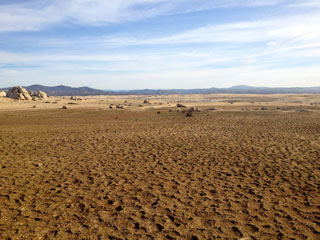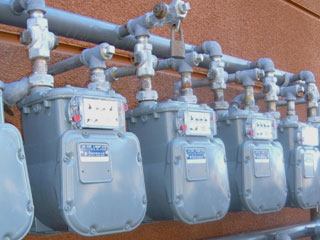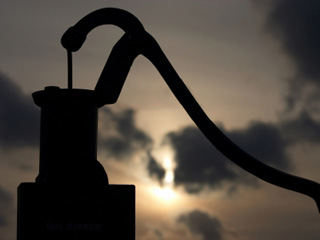In the midst of California’s most severe drought in thirty years, legislators took an historic step towards remedying its long-term negative impacts on the state’s groundwater supply. On Friday, August 29th, the California Senate and Assembly passed a package of bills (SB 1168, SB 1319, and AB 1739) which aims to regulate the extraction of groundwater and establish a sustainable program of groundwater management over the next 50 years.
Author: Svend Holst
Groundwater and the Public Trust Doctrine: The Recent Scott River Decision
In Environmental Law Foundation et al. v. State Water Resources Control Board, 34-2010-800000583, the Superior Court of Sacramento issued a narrow ruling that the public trust doctrine applies to groundwater hydrologically connected to navigable waters.
California Oregon Power Co. v. Beaver Portland Cement Co., 295 U.S. 142 (1935)
In California Oregon Power Co. v. Beaver Portland Cement Co., the United States Supreme Court addressed whether federal land patents issued to western settlers pursuant to federal land disposition laws such as the Homestead Act also conveyed federal common law riparian rights to water. The Court held that federal land patents did not include riparian water rights as a matter of federal law. Instead, the Court held that by the 1877 Desert Land Act, Congress had severed water resources from the federal public domain lands; as a result, the states were and are free to develop and enforce their own laws addressing water allocation.
Frost Protection Diversions and Stranded Salmon — The California Court of Appeal Affirms State Water Board Reliance on Reasonable Use Law To Maintain Instream Flow
In California water law these days, there is increasing talk about the reasonable use provisions of the California Constitution and the California Water Code. These provisions provide that all water uses and methods of water diversion in California must be reasonable and cannot be wasteful.
Call for Review of the 2014 California Water Law Symposium
As follow-up to the Symposium, The California Water Law Journal would like to offer attendees the opportunity to publish articles about the panels.
Short-term Transfers and Unenforceable Underground Regulations
On January 17, 2014, Governor Edmund G. Brown, Jr. declared a drought state of emergency and directed agencies to take action, including expediting water transfers, stating that “Voluntary water transfers from one water right holder to another enables water to flow where it is needed most.” Even if water will be available for transfer this year, short-term transfers may not occur in part because of added procedures that the Department of Water Resources is imposing on transfer proponents.
Upgrading Conservation Pricing Proposition 218, Smart Meters, And The Step Beyond Tiered Rates
Proposition 218 is pushing California’s conservation-pricing programs to evolve. Conservation-pricing programs use price signals to discourage the waste of water. Currently, such programs commonly rely on tiered rates. Customers pay a flat fee for a “basic use allocation,” which “provides a reasonable amount of water for [each] customer’s needs and property characteristics.”1 Once the basic use allocation is exhausted, a higher rate is charged for each additional unit of water consumed.2 Tiered-rate programs have proven effective even when per-unit price increases are small. Historically, both California’s Legislature and its courts have favored such programs, finding them consistent with Section 2 of Article X of the State’s Constitution, which states that “the conservation of [the State’s] waters is to be exercised with a view to the reasonable and beneficial use thereof.”3
California Wastewater Rates — Life after Bighorn v. Verjil
In California, voters passed Proposition 218 in 1996, which added articles XIII C and XIII D to the state Constitution. These articles set limits on property-based revenues (taxes, assessments, fees, and charges), and require voter approval for most increases. Particularly pertinent to wastewater rates is the inherent friction between Article XIII C Section 3, which affirms the right of voters to reduce their local property-related bills, including their wastewater rates, and Article XIII D Section 6, which allows local governing bodies to raise wastewater rates without voter approval.1 This paper discusses that friction as set forth in Bighorn-Desert View Water Agency v. Verjil, 39 Cal.4th 205 (2006), and explores relevant jurisprudence supporting a compromise between rate reductions and statutorily mandated rates.
Right Doctrine, Wrong Groundwater: The Environmental Law Foundation’s Flawed Attempt To Extend Public-Trust Protection To Groundwater
In Environmental Law Foundation, et al. v. State Water Resources Control Board, et al., Case No. 34-2010-80000583, three plaintiff organizations (collectively, ELF) claim that California’s Public Trust Doctrine requires the State Water Resources Control Board (Board) and Siskiyou County (County) to regulate groundwater that is hydraulically connected to the navigable Scott River (Scott Groundwater). Although ELF’s legal theory is sound, ELF chose the wrong case to test it. The Scott Groundwater already is subject to public-trust protections that are set forth in an existing Siskiyou County Superior Court Decree. Before it asks another Court to issue a new order based on a novel public-trust theory, ELF should seek better enforcement of the existing Decree.
Courting the idea of water courts in California: Whither a Eureka moment?
“Water courts: Are they right for California?” A distinguished panel gathered at the University of California, Davis on January 26, 2013 to entertain this question as part of the 2013 California Water Law Symposium (“Symposium”). This panel aptly fit the theme overarching the Symposium: “Beyond the water wars: collaborative management solutions for a shared resource,” as it contemplated the potential benefits and drawbacks of California adopting a management solution like Colorado’s specialized water courts.
Californian policymakers’ and legal practitioners’ contemplation of courting the idea of water courts matters at a deeper level for it suggests perhaps the status quo needs fundamental improvement. The panel’s discussion implicates the broader issue of how we ought to structure our judicial institutions to better serve the needs of citizens relying on courts to resolve water resource disputes. This article presents some of the diverse issues examined by the panel in their discussion, and offers suggestions to help California move further along in that quest.





